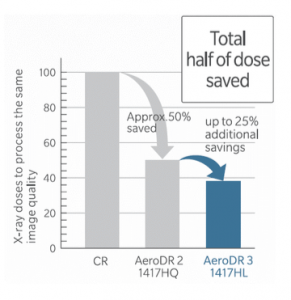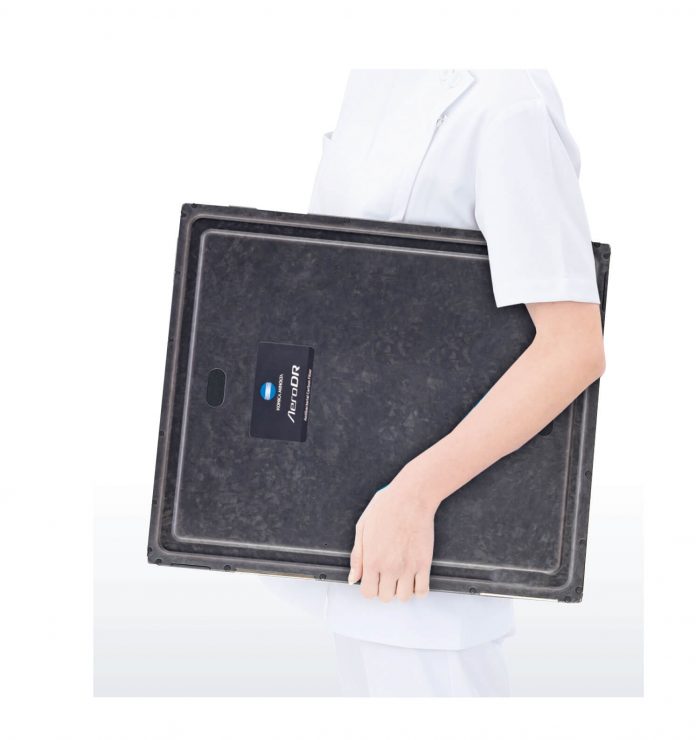On 10 March 2022, Konica Minolta announced that it will launch the AeroDR 3 1417HL, a cassette-type digital X-ray system. The Konica Minolta’s AeroDR family of cassette-type DR*1 systems has been used in diverse settings, including at the patient’s bedside, operating rooms and radiography rooms. It has a solid reputation among medical professionals for its ease of handling and ability to provide high-resolution images.
The conventional cassette-type DR offers users enhanced image quality and speed compared to CR*2, but weighs more than CR. The AeroDR 3 1417HL, even with its built-in battery, weighs only 1.9 kg, lighter*3than CR, while inheriting the AeroDR family’s ability to
deliver immediate results and capture high-quality images. The lighter weight and more secure hand grip help enhance work efficiency for medical professionals.
Values Offered by the AeroDR 3 1417HL system

Less stressful for performing radiography thanks to less weight and hand grip stability. A cassette-type DR is usually operated and carried with one hand, and so should be light enough for radiologists to handle with ease. In developing the AeroDR 3 1417HL, Konica Minolta succeeded in reducing the weight to 1.9 kg, making it lighter than the company’s CR cassettes, by employing thin film substrate TFT*4 for the first time in its AeroDR family and optimizing the internal design.
To make the device easier to hold, Konica Minolta made the recess on the edge of the cassette’s rear surface 4 mm deep, which allows radiologists to hold it securely even when it is covered with a plastic bag to protect against Covid-19. Along with its light weight, this reduces the stress of performing radiography and the fear of dropping it, so radiologists can focus on their work.
Highest quality images, lowest radiation dose AeroDR

A CsI scintillator (fluorescent substance)*5 critically affects the quality of images captured by DR. The CsI scintillator in the AeroDR family uses Konica Minolta’s proprietary vapor deposition technology developed for its CR cassettes.
The AeroDR 3 1417HL achieves a DQE*6 of 59%, the highest in the AeroDR family, by increasing the CsI scintillator’s thickness, introducing IC noise reduction technology, and making the inner side of the X-ray beam entrance surface thinner to reduce the loss of X-ray dose reaching the scintillator. The sensor panel’s pixel size of 100 μm delivers outstanding resolution, which, coupled with the high DQE, produces high-quality images even with a low radiation dose.
As a result, the AeroDR3 1417HL has succeeded in reducing the dose by approximately 25% compared to its preceding model, AeroDR 2, and by more than 60% compared to CR, thus lowering patients’ radiation exposure.
Less risk of infection with durable antibacterial property
An antibacterial material containing Ag (silver) is kneaded into the enclosure material of AeroDR3 1417HL. The antibacterial agent is evenly dispersed in the material in the thickness direction. Antibacterial property is not lost due to scratches in daily use.






